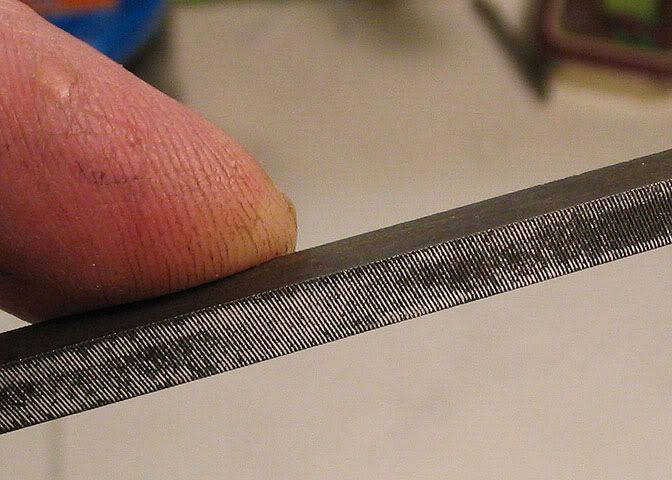Maryak
Well-Known Member
- Joined
- Sep 12, 2008
- Messages
- 4,990
- Reaction score
- 77
Dean,
An excellent tutorial on filing - TVM. :bow: :bow: :bow:
Marvs comments about safe edges add a little more to this dying art.
My 2 bob's worth is how I was taught to hold large thin flat surfaces which wont hold in a vice without bending or the file can't access the work because of the vice jaws.
Take a block of wood say a minimum of 1/2" bigger all round than the surface to be filed. Place the workpiece in the centre of the block of wood and lock it in place using small brads. When fitting the brads around the edges ensure that only the shank is touching the workpiece, the heads should remain above the workpiece. Filing to size removes the heads of the brads and the work remains securely locked to the wooden block, which is held firmly in the bench vice.
Best Regards
Bob
An excellent tutorial on filing - TVM. :bow: :bow: :bow:
Marvs comments about safe edges add a little more to this dying art.
My 2 bob's worth is how I was taught to hold large thin flat surfaces which wont hold in a vice without bending or the file can't access the work because of the vice jaws.
Take a block of wood say a minimum of 1/2" bigger all round than the surface to be filed. Place the workpiece in the centre of the block of wood and lock it in place using small brads. When fitting the brads around the edges ensure that only the shank is touching the workpiece, the heads should remain above the workpiece. Filing to size removes the heads of the brads and the work remains securely locked to the wooden block, which is held firmly in the bench vice.
Best Regards
Bob








